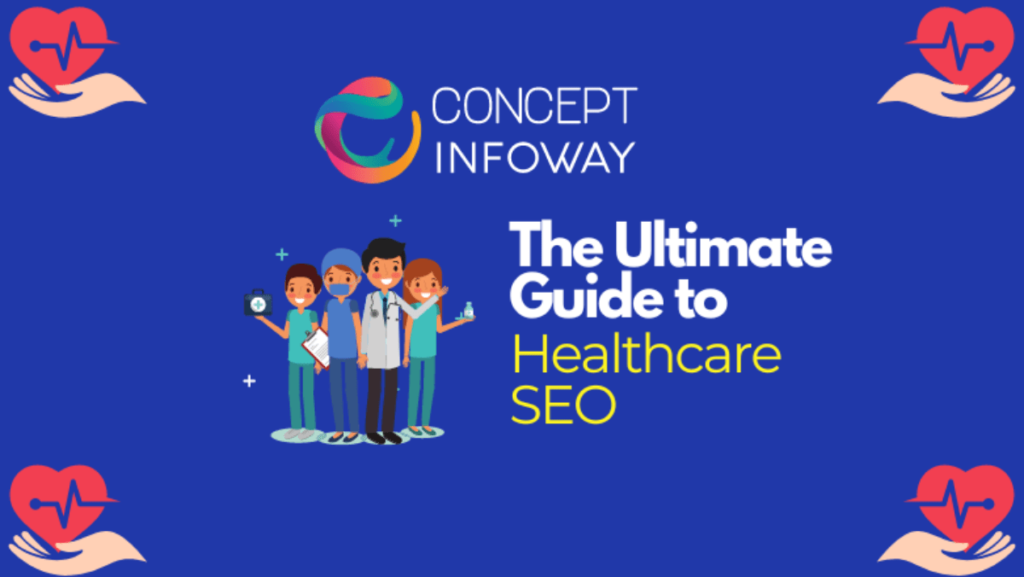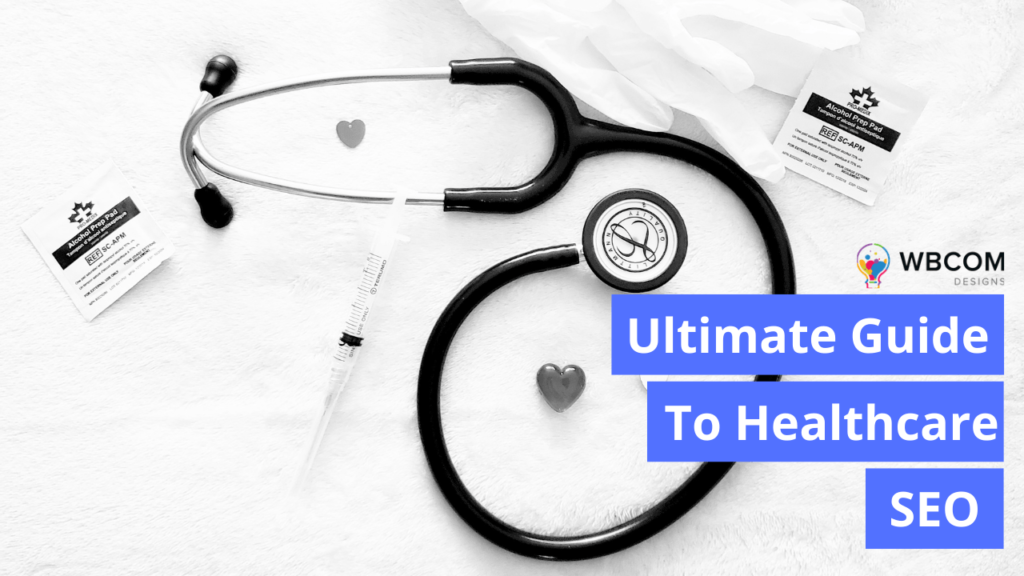Have you ever wondered how to improve your healthcare website’s visibility on search engines?
Search Engine Optimization, commonly known as SEO, is a crucial aspect of any online presence, including healthcare websites. By optimizing your website for search engines, you can increase your visibility, attract more patients, and ultimately grow your practice. In this Ultimate Guide to Healthcare SEO, we will explore everything you need to know to improve your website’s search engine rankings and drive more organic traffic to your site. Let’s get started!

Understanding Healthcare SEO
SEO is the process of optimizing your website so that it ranks higher on search engine results pages (SERPs) when users search for relevant keywords. Healthcare SEO involves focusing on keywords and phrases that are specific to the healthcare industry, such as “urgent care near me” or “best pediatrician in [city].” By targeting these keywords in your content, you can attract patients who are actively searching for healthcare services in your area.
Keywords and Content Strategy
Keyword research is the foundation of healthcare SEO. Start by identifying the keywords that potential patients are likely to use when searching for healthcare services online. Use tools like Google Keyword Planner or SEMrush to find relevant keywords with high search volume and low competition.
Once you have a list of target keywords, incorporate them into your website’s content strategically. Create high-quality, informative content that addresses the needs and concerns of your target audience. Focus on providing valuable information that educates and engages patients, while also incorporating your target keywords naturally throughout your website.
On-Page SEO
On-page SEO refers to the optimization of individual web pages to improve their search engine rankings. By optimizing elements such as titles, meta descriptions, headings, and content, you can make it easier for search engines to understand and index your website. Here are some key on-page SEO best practices for healthcare websites:
Title Tags and Meta Descriptions
Title tags and meta descriptions are HTML elements that provide information about a web page’s content to search engines and users. Your title tag should be concise, descriptive, and include your target keyword. Meta descriptions should be compelling and encourage users to click on your website in the search results.
Headings and Content Structure
Headings (H1, H2, H3, etc.) help to organize your content and make it easier for users to navigate. Use headings to break up your content into logical sections and incorporate your target keywords where relevant. Make sure your content is well-structured, informative, and easy to read.
URL Structure
Optimize your website’s URL structure by including relevant keywords and keeping URLs short and descriptive. Use hyphens to separate words in URLs, and avoid using numbers or special characters whenever possible. A clear and descriptive URL can improve your website’s visibility and make it easier for users to navigate.
Technical SEO
Technical SEO focuses on optimizing the technical aspects of your website to improve its search engine rankings. By addressing issues such as site speed, mobile-friendliness, and crawlability, you can ensure that search engines can index and rank your website effectively. Here are some key technical SEO considerations for healthcare websites:
Site Speed
Site speed is a critical ranking factor that can impact your website’s visibility on search engines. A slow-loading website can frustrate users and lead to higher bounce rates, which can negatively impact your SEO performance. Use tools like Google PageSpeed Insights to analyze your website’s speed and identify areas for improvement.
Mobile-Friendliness
With more users accessing the internet on mobile devices, it’s essential to have a mobile-friendly website. Responsive design ensures that your website displays properly on all devices, providing a seamless user experience regardless of the device used. Google prioritizes mobile-friendly websites in its search results, so optimizing for mobile is crucial for healthcare SEO.
Site Structure and Navigation
A clear site structure and navigation make it easier for users to find the information they need on your website. Organize your content logically, use internal linking to connect related pages, and create a user-friendly navigation menu. An intuitive site structure not only improves the user experience but also helps search engines crawl and index your website more effectively.
Local SEO
Local SEO is essential for healthcare practices that serve a specific geographic area. By optimizing your website for local search, you can attract patients in your area who are actively searching for healthcare services. Here are some key strategies for improving your local SEO:
Google My Business
Create and optimize your Google My Business profile to increase your visibility in local search results. Make sure your profile is complete and accurate, including your practice name, address, phone number, and hours of operation. Encourage patients to leave reviews on your Google My Business profile to build trust and credibility with potential patients.
Local Citations and Directories
Ensure that your practice is listed accurately on local citations and directories such as Yelp, Healthgrades, and Vitals. Consistent NAP (name, address, phone number) information across these platforms can improve your website’s credibility with search engines and increase your visibility in local search results.
Location-Based Keywords
Incorporate location-based keywords into your website’s content to improve your visibility in local search. Include your city or neighborhood in your content, meta tags, and URLs to signal to search engines that your website is relevant to users in your area. By targeting location-based keywords, you can attract patients who are looking for healthcare services near them.

Content Marketing and Link Building
Content marketing and link building are essential components of a successful healthcare SEO strategy. By creating high-quality content that educates and informs patients, you can attract organic links and improve your website’s authority. Here are some key content marketing and link building strategies for healthcare websites:
Blogging
Maintain a blog on your website to publish informative and engaging content on a regular basis. Blogging not only provides value to your patients but also gives you the opportunity to target a wide range of keywords and attract organic traffic. Use your blog to answer common healthcare questions, share patient testimonials, and provide updates on your practice.
Guest Blogging
Contribute guest posts to reputable healthcare websites and blogs to increase your website’s visibility and attract high-quality backlinks. Guest blogging allows you to reach a new audience and establish yourself as an authority in your field. Make sure to choose reputable websites with high domain authority to maximize the impact of your guest blogging efforts.
Social Media Marketing
Use social media platforms like Facebook, Twitter, and Instagram to promote your content and engage with your audience. Social media marketing can help drive traffic to your website, increase brand awareness, and build relationships with patients. Share your blog posts, patient testimonials, and practice updates on social media to reach a wider audience.
Monitoring and Tracking
Monitoring and tracking your SEO performance is essential to ensure that your efforts are paying off. By regularly analyzing your website’s traffic, rankings, and conversions, you can identify areas for improvement and make data-driven decisions to optimize your SEO strategy. Here are some key metrics to track for healthcare SEO:
Organic Traffic
Monitor your website’s organic traffic to see how many visitors are coming to your website through search engines. Track changes in organic traffic over time to assess the effectiveness of your SEO efforts and identify trends that may impact your search engine rankings.
Keyword Rankings
Track your website’s rankings for target keywords to see how well your SEO strategy is performing. Monitor changes in keyword rankings regularly to identify opportunities for improvement and adjust your content strategy as needed.
Conversion Rates
Monitor your website’s conversion rates to see how many visitors are taking the desired action, such as booking an appointment or contacting your practice. Analyze the impact of your SEO efforts on conversion rates to ensure that your website is effectively turning visitors into patients.

Conclusion
In conclusion, healthcare SEO is essential for improving your website’s visibility on search engines and attracting more patients to your practice. By focusing on keywords, content strategy, on-page SEO, technical SEO, local SEO, content marketing, and link building, you can create a comprehensive SEO strategy that drives organic traffic and boosts your online presence. Remember to monitor and track your SEO performance regularly to optimize your strategy and stay ahead of the competition. With a solid SEO foundation, your healthcare website can rank higher in search results, attract more patients, and ultimately grow your practice. Start implementing these healthcare SEO strategies today to see real results!

